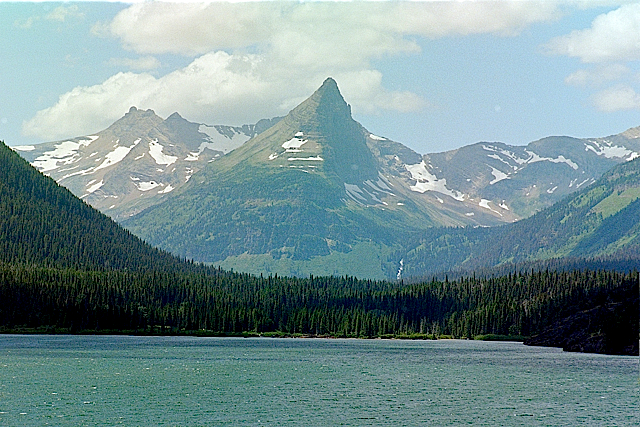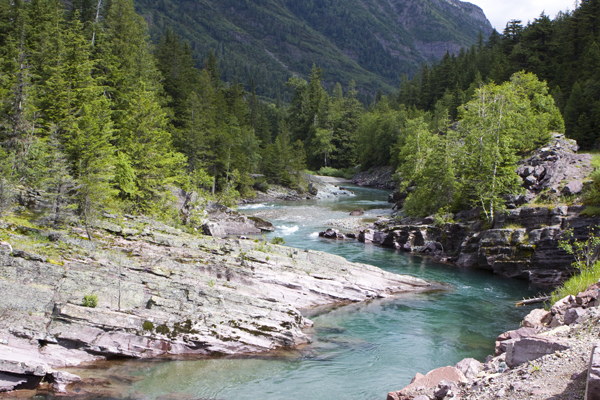How Do These People Sleep At Night?
I write about John Spinello, a member of Governor elect Christie’s Environmental Transition Team and a rumored candidate for NJ DEP Commissioner.
On November 25, 2009 when Christie’s Team was announced, I wrote:
I worked with John Spinello while he was at DEP (before he went to EPA with Christie Whitman) he is highly competent, but has been known to be an “environmental hitman“.
So let’s take a look at a US Senate investigation report that documents how an “environmental hitman” operates.
Spinello was with DEP while I was there (circa early 1990’s). He later went on to work in the Governor’s Office as legal counsel to former NJ Governor Christie Whitman. In 2001, when Whitman was appointed as the Bush EPA Administrator, she brought Spinello to EPA as legal counsel.
[Note: Whitman also brought another of her NJ legal counselors, Bob Fabricant, to EPA.
Fabricant is the Bush EPA lawyer who wrote the legal opinion reversed by the US Supreme Court in the groundbreaking Massachusetts v. EPA case. Fabricant argued for the big polluters, concluding that green house gases were not “pollutants” under the Clean Air Act and therefore could not be regulated by EPA. In an historic decision, the Supreme Court reversed Fabricant’s pro-industry analysis. (see Robert Fabricant’s August 2003 Memorandum denying that the EPA has authority to regulate carbon dioxide under the Clean Air Act.  Download PDF. I guess Fabricant joins the infamous lawyer who argued that black children could be separate and equal in segregated schools in the equally historic 1954 Supreme Court Brown v. Board of Education case.
Download PDF. I guess Fabricant joins the infamous lawyer who argued that black children could be separate and equal in segregated schools in the equally historic 1954 Supreme Court Brown v. Board of Education case.
While Whitman and Fabricant will go down as being on the wrong side of history, lets get back to Spinello’s dirty deeds (which include, in addition to being a global warming science denier and defender of criminal polluters who poison children with toxic mercury
But attorney John F. Spinello questioned why the bill required only exposure to chemicals, not demonstrated harm from exposure
and attacking the DEP’s legal authority to regulate toxic mercury air pollution (see comment #33, which was submitted by Spinello)![]() and opposing green house gas emission reductions from the shipping industry). End Note.]
and opposing green house gas emission reductions from the shipping industry). End Note.]
Spinello’s role in “playing fast and loose with the facts and the law” was explored at length in a fascinating US Senate investigation report of how political pressure forced EPA to reverse its own decision to declare a public health emergency in Libby Montana. A careful review of EPA staff interviews and Spinello’s emails reveals that he was deeply implicated in the scandal and worked between EPA and OMB to craft a bogus and discredited legal theory (see paragraph #6 on pages 31-35 – For full Senate Report, see: United States Senate Committee on Environment and Public Works …
The Senate Report found (verbatim findings):
1) A public health emergency exists in Libby Montana.
2) EPA Region 8 and Administrator Whitman concurred in a decision to declare a public health emergency in April 2002.
3) the [White House’s] Office of Management and Budget (OMB) interfered with EPA’s decision-making process and … discouraged EPA from declaring a public health emergency.
4) EPA’s claims … stem from a concerted effort to avoid declaring a public health emergency, despite evidence that the declaration was warranted and the lack of factual basis [to support EPA’s claims].
5) the residents of Libby were denied medical care from the federal government to which they were legally entitled.
6) EPA has delayed finishing a toxicity assessment of the Libby asbestos for over six years.
7) EPA provided misleading information to the residents of Libby.
8 ) EPA has failed to address the national issue of asbestos contaminated Zonolite Attic Insulation. [Note: this relates to a criminal investigation involving a notorious WR Grace asbestos site in Hamilton, NJ -see “Legislature to Probe Toxic Collapse in NJ“]
Here’s Montana Senator Max Baucus’ statement on the outrageous EPA behavior:
“What we have found is a pattern of intervention from OMB, the White House, and political appointees at EPA that undermined cleanup efforts at Libby, delayed necessary toxicity studies, prevented a Public Health Emergency declaration, and ultimately left the people of Libby – people like my friend Less exposed to dangerous amphibole asbestos with no long term medical care.
EPA and OMB have played fast and loose with the facts and the law. They have put saving money over saving lives. They have failed the people of Libby. And I am outraged.
EPA’s own documents show that a public health emergency exists in Libby. Over 200 people have died, and over 1000 more are sick. No other Superfund site in the country has seen this kind of devastation. In the words of an EPA Region 8 attorney, “EPA rarely finds health problems of the magnitude of those found in Libby. If a precedent is to be set in using this section of CERCLA [to declare a public health emergency], Libby is an appropriate place to do so”.
Our findings show that top level officials at EPA, including then Administrator Whitman appear to have approved of the plan to declare a Public Health Emergency. EPA staff prepared briefing materials for Administrator Whitman and drafted press releases announcing a Public Health Emergency declaration. And as Commissioner Roose will testify later in this hearing, Administrator Whitman herself committed to declare a Public Health Emergency at a town hall meeting in Libby.
Tragically for the people of Libby, the plan to declare a public health emergency was derailed following a top level meeting on April 16th of 2002 between EPA, OMB, CEQ, and the White House.
Concurrent with this meeting, EPA’s Office of General Council at the direction of the Administrator’s Office developed a different legal theory [Note: Spinello served at EPA OGC] for allowing EPA to remove some Zonolite Attic Insulation without declaring a Public Health Emergency. Under this legal theory, EPA claimed that the insulation in homes in Libby was not actually a product because W.R. Grace had given away waste vermiculite, which residents put in their attics instead of store-bought insulation.
There was no factual basis for this claim. In fact, it’s completely bogus. An attorney in EPA Region 8 noted, “there is nothing in our record to indicate that these giveaways were put in people’s attics.”
The political appointees at EPA, OMB, and the White House ignored officials on the ground, ignored the law, and ignored the health needs of Libby. Had EPA declared a Public Health Emergency, the residents of Libby would have been entitled to medical care. They would have been provided with basic help, like oxygen, which many residents need but cannot afford.”
The practice of lying to the people of Libby was not Whitman’s first fib and it reminded me of some history with Whitman.
As NJ Governor, Christine Todd Whitman certainly shocked my conscience as a DEP professional in 1994 when she lied to NJ residents about health risks – particularly to pregnant and nursing women and children – from toxic mercury contamination in NJ freshwater fish (for details of that episode see “New National Mercury Research Confirms NJ Experience”)
Repeating this outrage, a mere 7 years later, Whitman’s false and misleading statements as federal EPA Administrator that the air was safe to breath in southern Manhattan after the 9/11 attacks shocked the conscience of a federal District Court Judge, who wrote:
“The EPA is designated as the agency in our country to protect human health and the environment, and is mandated to work for a cleaner, healthier environment for the American people. The agency enforces regulations regarding pollution in our environment and the presence of toxic and hazardous substances, and has endorsed and promulgated regulations for hazardous and toxic materials, such as asbestos and lead. As head of the EPA, Whitman knew of this mandate and took part in and directed the regulatory activities of the agency. Given this responsibility, the allegations in this case of Whitman’s reassuring and misleading statements of safety after the September 11, 2001 attacks are without question conscience-shocking. ”
“No reasonable person would have thought that telling thousands of people that it was safe to return to Lower Manhattan, while knowing that such return could pose long-term health risks and other dire consequences, was conduct sanctioned by our laws. Whitman’s deliberate and misleading statements made to the press shocks the conscience. (Benzman v. Whitman, No. 04 Civ. 1888, 2006 WL 250527 (S.D.N.Y. Feb. 2, 2006). That District Court decision was reversed by the Appellate Court see this)
To wrap up, lets get back to Spinello.
Shamelessly, after serving as an “environmental hitman” inside EPA by directly advancing a bogus legal theory that overrode EPA lawyers and scientists for the benefit of corporate killer WR Grace, Spinello took the revolving door. As recently as July 21, 2008 and July 28, 2008, he represented corporate interests at EPA Science Advisory Board followup meetings on asbestos. Spinello has no shame, and affirmatively defends corrupt revolving door practice:
“It’s important to have people in government who can reflect the perspective of the private sector EPA regulates,” said John Spinello, a Bush appointee who served as the agency’s associate deputy general counsel until he resigned last year to take a job as a corporate lawyer in New Jersey (Newsday “Erasing the Rules“)
So, does “three strikes and you’re out” apply to high level government officials like Whitman and Spinello?
How are they allowed to maintain a credible voice in environmental policy after such gross betrayals of the public trust?
How do these people sleep at night?
[PS – I should have mentioned that the St. Louis Post Dispatch broke this story way back in 2002:
BY ANDREW SCHNEIDER12/27/2002
WASHINGTON – The Environmental Protection Agency was on the verge of warning millions of Americans that their attics and walls might contain asbestos-contaminated insulation. But, at the last minute, the White House intervened, and the warning has never been issued.
A public health emergency declaration had never been issued by any agency. It would have authorized the removal of the disease-causing insulation from homes in Libby and also provided long-term medical care for those made sick. Additionally, it would have triggered notification of property owners elsewhere who might be exposed to the contaminated insulation.

































